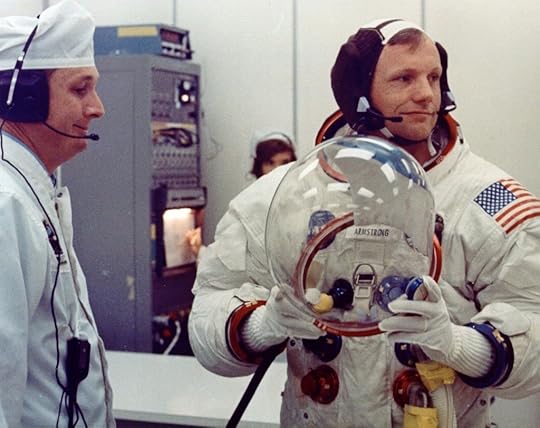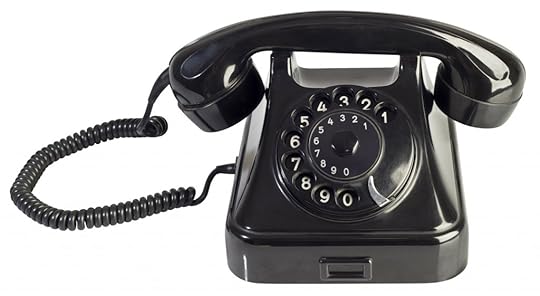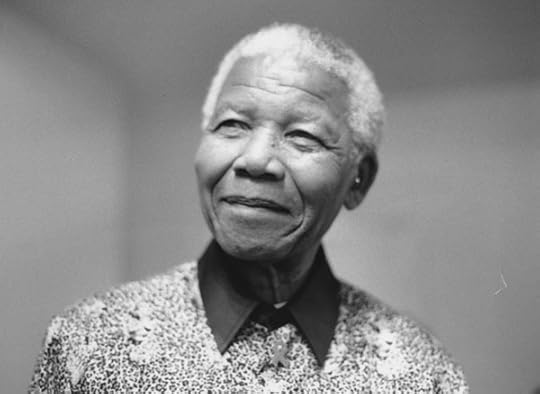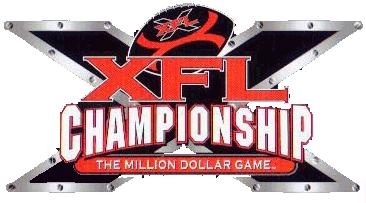Bathroom Readers' Institute's Blog, page 60
May 23, 2017
Strange College Sports That Really Exist

The world of varsity athletics isn’t all football and basketball. There are a lot more kooky options to get the student body going rah-rah-siss-boom-bah.
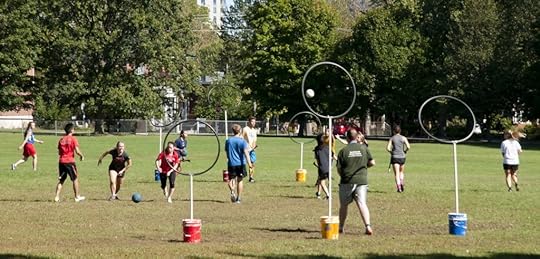
Quidditch
The most popular sport in the “wizarding world” of the Harry Potter books and films is quidditch. It’s played by wizards and witches, so there’s a certain amount of magic involved. Like an airborne version of lacrosse, players ride flying broomsticks as they try to hit a ball through a floating goal…although the game is instantly over if the team’s designated “Seeker” catches “the Golden Snitch,” a tiny, enchanted golden ball with a mind of its own. Since flying broomsticks and Golden Snitches aren’t real, it’s impossible to play real quidditch, but “muggle quidditch” has caught on as a sport at colleges in the U.S. and Europe. (“Muggle” is what wizards call nonmagical humans in the Potter books.) Muggle quidditch players hold a broomstick between their legs and run around a field, trying to score goals. The stand-in for the Golden Snitch is a human dressed all in yellow and runs around the field. He is “caught” if somebody pulls the flag sticking out of his or her pants. U.S. Quidditch is the official governing body of the sport (seriously), and it maintains a ranking of more than 100 college and amateur teams.
Octopush
Do you like water polo but think it’s got too much above-water action, such as not breathing through a snorkel? Then octopush, or underwater hockey, is the sport for you. It was created by a scuba diving club in England in the ’50s as a way to keep club members at the pool instead of skipping down for the beach, it involves two teams of eight players each using stick to push a weighted puck around the bottom of the pool. The puck doesn’t float, but players are allowed to surface for the occasional air break; otherwise, they have to hold their breath while pushing past defenders to score a goal. Only about a dozen colleges have an octopush team, including Oxford, M.I.T., and Mount Hood Community College in Portland, Oregon.
Quidditch
The most popular sport in the “wizarding world” of the Harry Potter books and films is quidditch. It’s played by wizards and witches, so there’s a certain amount of magic involved. Like an airborne version of lacrosse, players ride flying broomsticks as they try to hit a ball through a floating goal…although the game is instantly over if the team’s designated “Seeker” catches “the Golden Snitch,” a tiny, enchanted golden ball with a mind of its own. Since flying broomsticks and Golden Snitches aren’t real, it’s impossible to play real quidditch, but “muggle quidditch” has caught on as a sport at colleges in the U.S. and Europe. (“Muggle” is what wizards call nonmagical humans in the Potter books.) Muggle quidditch players hold a broomstick between their legs and run around a field, trying to score goals. The stand-in for the Golden Snitch is a human dressed all in yellow and runs around the field. He is “caught” if somebody pulls the flag sticking out of his or her pants. U.S. Quidditch is the official governing body of the sport (seriously), and it maintains a ranking of more than 100 college and amateur teams.
Dodgeball
That game from elementary school in which kids pummel each other with balls has been kept alive through the educational system all the way into college. The National Collegiate Dodgeball Association boasts a membership of 31 teams from colleges across the country, including the University of Virginia and Ohio State University. While rules for dodgeball vary from elementary school to elementary school and gym teacher to gym teacher, the NCDA has a codified rule system that makes the game universal. In their system, teams consist of 15 players and games are held on a standard basketball court, split in half and with a “neutral zone.” Slightly under-inflated rubber balls are the equipment of choice, and it’s one of the few college sports in which men and women play on the same teams.
The post Strange College Sports That Really Exist appeared first on Trivia Books and Facts | Uncle John's Bathroom Reader.
Weird Wrestlers
Professional wrestling is already pretty silly, with good guys and bad guys, over-the-top acting, and rigged matches. But the “sport” outdid itself when it introduced these really silly wrestling characters.
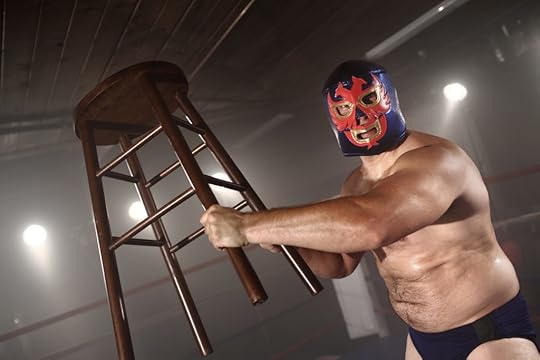
THE GOBBLEDY GOOKER
He was a giant turkey, complete with feathers, a beak, and wings. When the character debuted, he popped out of a huge egg.
SERGEANT SLAUGHTER
At the peak of the first Gulf War in 1991, the WWF brought in this villain, an Iraqi-flag-waving Saddam Hussein sympathizer.
GIANT GONZALES
A failed NBA basketball player, Gonzales was a lanky 7’7″ and not muscular enough to wrestle. Solution: He wore a rubber suit covered with fake hair and painted muscles.
DOINK THE CLOWN
Since 1993 “Doink” has wrestled in a full clown costume, with face makeup and bright green hair. (In tag-team matches he’s assisted by “Dink the Clown,” an identically dressed dwarf clown.)
THE JUICER
A steroid addict? No—the Juicer was introduced in 1989 to capitalize on the movie Beetlejuice. Like the movie’s title character, the wrestler sprayed “death breath” (green mist) and attacked with Silly String.
RED ROOSTER
A guy with dyed scarlet hair who flapped his arms like wings and chicken danced around the ring, screaming “cock-a-doodle-doo!”
THE GENIUS
Coming to the ring wearing a graduation cap and gown, the Genius appeared to be highly intelligent, speaking in a haughty accent and peppering his sentences with big words…and then he beat people up.
ISAAC YANKEM, DDS
An evil dentist, dressed in a white smock and face mask, who threatens to remove his opponents’ teeth.
IRWIN R. SCHEISTER
Somebody everybody could fear: an IRS agent. He wore glasses, a shirt, and a skinny tie, and hit people with his briefcase. As sportswriter Mike Stokes put it, the tax collector came across as “a cranky math teacher.”
THE POET
He read poetry at the beginning of fights…and then he beat people up.
AKEEM THE AFRICAN DREAM
Akeem dressed, talked, and acted “black.” He wore a traditional African dashiki, spoke in 1970s jive, and had a street pimp named Slick as a sidekick. And he was portrayed by a white guy.
ROADBLOCK
He looked like a road. He had a yellow “dead end” sign painted on his stomach, hit opponents with a barricade, and dressed in a black bodysuit (to look like pavement).
GOLDUST
He wore a sparkly robe and a long blond wig and intimidated opponents by licking their faces. His skin was spray painted gold and he’d stop matches to cry about how his father didn’t love him enough.
BROTHER LOVE
A stereotypical Southern evangelist who preached “the word of love”…and then beat people up.
SEXUAL CHOCOLATE
A deep-voiced, smooth-talking ladies’ man, like 1970s soul singer Barry White. The character was based on South Park’s Chef—a parody of deep-voiced, smooth-talking 1970s soul singers.
THE BOOTY MAN
On his way into the ring, he dropped his pants and shook his bare buttocks. (He was actually wearing a flesh-colored prosthesis.)
AMISH ROADKILL
Inspired by the 1996 Amish-themed movie Kingpin, Amish Roadkill wore plain black Amish clothing, a black hat, and a long beard. He usually lost matches, because the Amish don’t believe in fighting.
The post Weird Wrestlers appeared first on Trivia Books and Facts | Uncle John's Bathroom Reader.
May 19, 2017
Can You Deduce the Right Answers to This Sherlock Holmes Quiz?
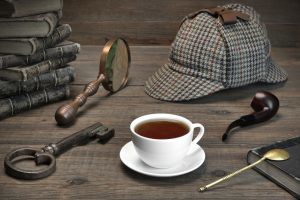
#fca_qc_quiz_34634 button.fca_qc_button {
background-color: #58afa2;
box-shadow: 0 2px 0 0 #3c7d73;
}
#fca_qc_quiz_34634 button.fca_qc_button:hover {
background-color: #3c7d73;
}
#fca_qc_quiz_34634 div.fca_qc_answer_div.fakehover,
#fca_qc_quiz_34634 div.fca_qc_answer_div:active {
background-color: #8dc8bf;
}
Can You Deduce the Right Answers to This Sherlock Holmes Quiz?
May 22 is Sherlock Day…most likely due to the fact that it’s also the birthday
of Sir Arthur Conan Doyle, the English writer who created the genius detective.
Have fun with this quiz about Sherlock Holmes—the game is afoot!
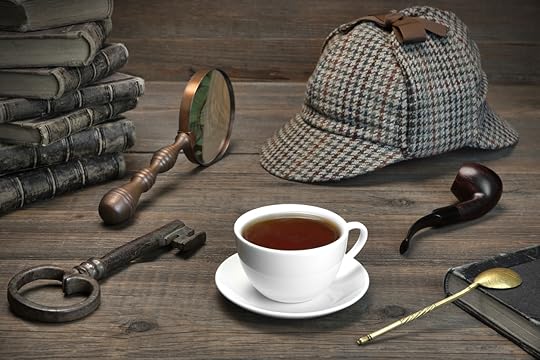
Start Quiz
Question
[image error][image error][image error][image error][image error][image error]
Your answer:
Correct answer:
NextYou got {{SCORE_CORRECT}} out of {{SCORE_TOTAL}}
[image error]SHARE YOUR RESULTSTweetPinEmailYour Answers
Retake Quiz
The post Can You Deduce the Right Answers to This Sherlock Holmes Quiz? appeared first on Trivia Books and Facts | Uncle John's Bathroom Reader.
Be Careful, or You Might Lose a Finger
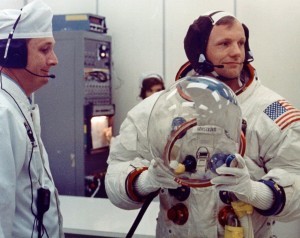
And if you did…you’d be just like these famous people who also didn’t wind up with a full set of 10 fingers.
Neil Armstrong
As a pioneer of space flight, he was the first man on the moon and one of only a handful of people to ever brave leaving the planet. And yet it was an accident on Earth that wound up losing him a finger. In 1979, he was working on his farm and got his wedding ring stuck in the gears of a tractor. He didn’t get it out in time—his ring and ring finger got torn clean off. (He then packed it in some ice and drove himself to the hospital to get it reattached.)
Jerry Garcia
The leader of the Grateful Dead is one of the most influential rock guitarists of all time, despite losing two-thirds of the middle finger on his right hand. The loss happened when Garcia was a little boy—he was holding down a piece of wood for his father to chop…and dad missed.
James Doohan
Scotty from Star Trek lost his finger in the legendary and legendarily brutal battle on the beaches of Normandy on D-Day in 1944. Fighting for the Royal Canadian Army, Doohan was hit by multiple rounds of friendly fire in the chaos. Four bullets went into his leg, one went into his chest (which would’ve likely killed him, had it not been blocked by a cigarette case), and the other hit his right middle finger, which had to be amputated.
Daryl Hannah
When she was a little kid, the future star of Splash and Blade Runner was playing at a well near her grandmother’s house. Her left index finger got stuck in a pulley, and, well, so long finger.
Rahm Emanuel
Current Chicago mayor and former White House Chief of Staff to President Obama joined the working world as a teenager in the 1970s with a job at Arby’s. He was cutting some roast beef on a meat slicer one day…and went a little too far and gave himself a deep cut. The finger got so infected it soon had to be removed.
The post Be Careful, or You Might Lose a Finger appeared first on Trivia Books and Facts | Uncle John's Bathroom Reader.
R.I.P Chris Cornell
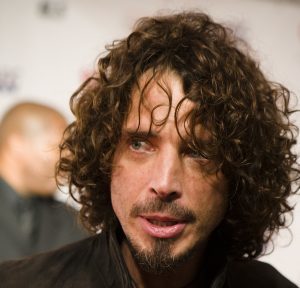
Rock icon Chris Cornell, lead singer of Soundgarden passed away this week at age 52. Here’s some stuff you may not have known about grunge icon.
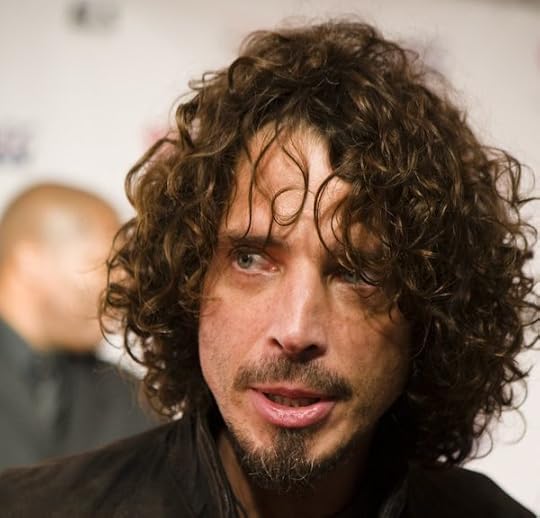
He trolled metal bands.
When brooding, Seattle-based “grunge” bands like Soundgarden, Pearl Jam, and Nirvana came on the scene in the ‘90s, they soon displaced a lot of the glitzier, sleazy, Los Angeles based bands like Guns N’ Roses and Poison. One of Soundgarden’s songs was called “Big Dumb Sex,” which made fun of those cheesy, light-on-the-lyrics metal bands. Sample lyrics: “Don’t you don’t you want to thrill me / don’t you be afraid to tell me”…and then a few minutes of mostly the F-word.
He sold fish.
Cornell was a little bit older than the usual pop and rock star when he got his big breakthrough—he was 27 when Soundgarden’s Badmotorfinger became a massive success in 1991. Before that, he played in several other Seattle bands but he paid the bills the way lots of people in the Puget Sound area do: in the seafood industry. As a teenager he worked as a fish handler at a seafood wholesaler, where his job was to “wipe up the slime and throw away the fish guts.” supplying fish to restaurants, and then served as a sous-chef at a fish place called Ray’s Boathouse. In 2006, he opened up his own restaurant and bar in the heart of Paris called Black Calavados.
He played Cuba.
In 2001, Cornell formed the supergroup Audioslave—it was made up of the members of fellow popular ‘90s rock band Rage Against the Machine, but with Cornell replacing lead singer Zack de la Rocha. The band released three bestselling albums, but in 2005 made history. Audioslave played a free concert for 70,000 people in Havana, the first American rock band to ever play on the island nation that’s been under Communist rule since the 1950s.
He survived a horrific accident.
While riding his motorcycle to a Los Angeles recording studio to work on his second solo album in 2006, Cornell was struck from behind by a truck. He was reportedly thrust 20 feet into the air, and then landed, hard, on the street. Other than some cuts and bruises for which he was treated at the scene, Cornell walked away from the accident. He was back in the studio recording tracks later that day.
His career took some unpredictable turns.
While the music of Soundgarden was dark and often gloomy, Cornell’s solo work took some unexpected turns. In 2006, he recorded a slow, soulful, acoustic guitar-driven cover of Michael Jackson’s “Billie Jean,” an arrangement used by American Idol winner David Cook during his time on the singing competition series. In 2007, Cornell recorded “You Know My Name,” the theme song for the James Bond reboot movie Casino Royale. Perhaps most surprisingly is his 2009 dance-pop album Scream.
The post R.I.P Chris Cornell appeared first on Trivia Books and Facts | Uncle John's Bathroom Reader.
May 17, 2017
Moshi Moshi!
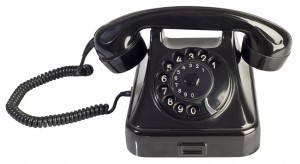
It’s more than just saying “hello?” Answering the phone in different countries and in different languages varies quite a bit, and depends on local customs and idioms. Here’s what you would say if you picked up a ringing phone in…
Italian
In Italy, the common greeting is “Pronto.” That translates roughly to “Ready,” as in, “I’m here and can hear you.”
Polish
The Polish greeting is “Tak. Słucham?” The question being asked: “Hello, who is it calling?”
Spanish
In some Spanish-speaking countries, you’d say “¿Diga?” That means “speak,” or “you can go ahead and start talking now.”
Mexico
Mexico is a Spanish-speaking country, but the culture is very different than that of Spain. On the phone, for example, you’d say “bueno.” That literally means “good” in English, but in this context it means something more like “well?”
Japanese
Manners matter in Japanese culture. In terms of telephone usage, that means there are a number of different greetings to use, depending on the situation. Almost all of the time, the go-to phrase is “moshi moshi,” an informal form of hello used for friends and family. But why? It goes back to Japanese folklore: evil, shapeshifting foxes called Kitsune can pretend to be humans and come into your home. However, Kitsune can’t fully speak, so if you say “mushi mushi” to them, they can’t respond, and their ruse is discovered. (For an expected business call, a more formal “hai” is preferred. It means “yes?” but is pronounced “hi,” which is a very informal way of answering the phone in English-speaking countries.)
German
It’s quite formal in Germany. The proper way to answer a phone call is to say one’s last name, and follow it with “guten tag,” which is “hello.”
Tamil
Tamil is a major language in southern India. Phones there are answered with “Sollunga,” roughly “tell me.”
Dutch
If you were in the Netherlands, you’d answer “Met,” and then say your first name. That literally means “With [your name],” but it essentially means “[Name] here, speak please!”
Serbian
The greeting in Serbia is very leading: “Da, molim” translates to “yes, please.”
The post Moshi Moshi! appeared first on Trivia Books and Facts | Uncle John's Bathroom Reader.
Celebrities Who Were in the Service
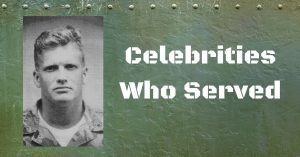
Before they provided us with entertainment, these stars did a stint in the armed forces.
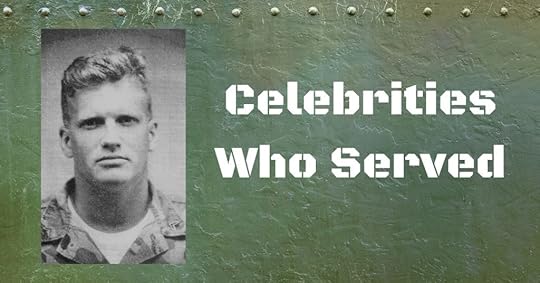
Drew Carey
This should explain why he’s worn a crewcut hairstyle for so many years: comedian and The Price is Right host Drew Carey served in the U.S. Marine Corps for six years in the 1980s.
Adam Driver
Adam Driver (from Girls and Star Wars: The Force Awakens) joined the Marines right after the attacks of 9/11. He was trained as a mortar man and served for almost three years—right before his unit was scheduled to be deployed to Iraq, he broke his sternum while mountain biking, and he got a medical discharge.
Johnny Carson
Johnny Carson wasn’t drafted during World War II—he enlisted in the Navy, hoping he’d get a shot at being a pilot. Instead, he was sent into training to be a midshipman and was assigned to the USS Pennsylvania in the Pacific Ocean theater. But the ship was torpedoed while Carson’s unit was on its way, forcing him to re-report for duty on August 14, 1945, the day Japan’s surrender was announced…in other words, the last day of the U.S.’s involvement in the war.
Ed McMahon
Carson’s longtime The Tonight Show sidekick, Ed McMahon, put in a lot more time in the military than his boss did. McMahon was a veteran of two wars. He served as a captain in the Marines from 1943 to 1945 during World War II, and returned to active duty in 1952 to fight in the Korean War.
Ray Manzarek
The Doors were one of the edgier bands of the late 1960s, giving voice to the young “counterculture movement,” which was strongly opposed to the Vietnam War. Nevertheless, before keyboard player Ray Manzarek formed the band, he served for two years in Thailand and Okinawa as a member of the U.S. Army.
Johnny Carson
In the early ‘50s, and before his musical career took off, Johnny Carson was in the Air Force. He served as a Morse code intercept operator, meaning he spied on enemy transmissions. Because of the nature of the job, the future Man in Black was actually the first American to hear about the death of Soviet leader Joseph Stalin in 1953.
The post Celebrities Who Were in the Service appeared first on Trivia Books and Facts | Uncle John's Bathroom Reader.
May 16, 2017
SNL Around the World
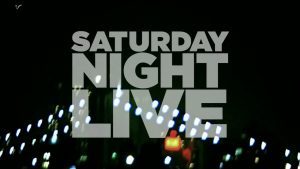
Saturday Night Live is drawing some of its biggest ratings of its 40-year-plus history, thanks in part to stars like Kate McKinnon, and Alec Baldwin’s impression of President Donald Trump. But SNL isn’t just an American phenomenon—the show’s format has been exported to other countries.
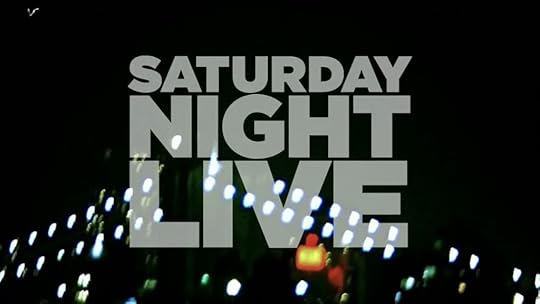
In 2014, SNL came to French-speaking Canada in the form of SNL Quebec. The specials were part French translations of classic SNL sketches (such as “Debbie Downer”) and new pieces written for French Canadian audiences. Network Tele-Quebec canceled after two specials and eight regular episodes due to budget cuts, but a rival network hired the show’s writers and cast for a very similar sketch comedy show called Le Nouveau Show, or “The New Show”. (Ironically, SNL creator Lorne Michaels left the series for a few years in the ‘80s, and he helmed a short-lived sketch comedy series called…The New Show.)
SNL Spain both debuted and died in 2009. The show didn’t produce any original content, merely remaking well-known bits from the American version of Saturday Night Live, but in Spanish. (They even used the source show’s graphics and music cues.) And oddly enough, SNL Spain aired on Thursdays, and in the early evening. Here’s their take on the classic “More Cowbell” sketch, which instead of using Blue Oyster Cult’s cowbell-heavy “(Don’t Fear) The Reaper” as a reference point, it makes fun of the Spanish rock band Baron Rojo.
The writers for SNL Japan made original sketches for the local audiences, as well as some other changes from the American version of the show. Instead of a different guest host every week, SNL Japan had a permanent host. And instead of airing weekly for 90 minutes, it aired once a month and lasted for 45 minutes. This show only lasted a handful of episodes before it was canceled in 2011.
A couple more. What was the French version of Saturday Night Live called? Le Saturday Night Live, or course.
In Germany, Samstag Nacht (or “Saturday Night”) ran on late night TV for five years.
The post SNL Around the World appeared first on Trivia Books and Facts | Uncle John's Bathroom Reader.
May 15, 2017
The Mandela Effect
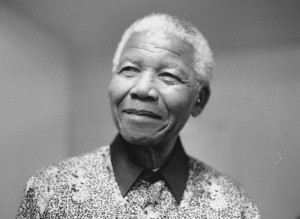
At least a trace of everything that’s ever happened or existed can be found on the internet. Except when it can’t. Obviously, this means there’s a conspiracy at play, or time travel, or “alternate timelines.” Those are the reasons some people out there have given to explain the bizarre cultural phenomenon of a collective, incorrect memory of a news event or pop cultural item. Here’s a look inside “the Mandela Effect.”
The Mandela Effect is a bizarre psychological and cultural phenomenon in which a large group of people all have the same false memory about something. It gets its name from the fact that thousands of people all over the world believe that South African civil rights leader Nelson Mandela died in prison in the 1980s. He didn’t, of course—he was released from prison in 1990 and was elected president of his country in 1992, and died in 2013.
Many people online are convinced that sometime in the early ‘90s, the popular ‘90s comedian and actor Sinbad starred in a family movie as a genie. In forums on Reddit and on other sites, dozens claim to remember watching said movie when they were children, and compare plot points. Does this sound familiar to you? If it does, you’re probably thinking of the 1996 family movie Shazam, in which Shaquille O’Neal, not Sinbad, played a genie. Or, as Sinbad himself said on Twitter, conflating Shazam with the fact that in 1994 he was an on-air host on the cable channel TNT, and he once played an afternoon of Sinbad the Sailor movies while dressed in a turban…the kind of headgear a genie might wear.
In early 2016, rumors began swirling around the internet that a great percentage of people alive today have arrived in this reality from an alternate universe—an alternate universe in which Stan and Jan Berenstein wrote children’s books about the Berenstein Bears. Because in this reality, it’s spelled Berenstain—that’s with an “a,” not an “e.” Similar to the Sinbad genie movie, people swear that they read Berenstein Bears books as children and only something truly cosmic could explain the discrepancy, and not, say, fuzzy childhood memories of how a name was spelled.
Another example of the Mandela Effect: misremembered movie and TV quotes. Some of the most famous quotes from the screen were never actually said at all, such as “beam me up Scotty,” from Star Trek, or “Luke, I am your father” from The Empire Strikes Back. They’ve been misquoted for so long and so often that they become embedded in the cultural consciousness that way, incorrectly. Even if you think you heard Darth Vader say those exact words…you didn’t. (Or maybe you’re from an alternate dimension.)
The post The Mandela Effect appeared first on Trivia Books and Facts | Uncle John's Bathroom Reader.
May 12, 2017
The XFL: The Biggest Disaster in Football History
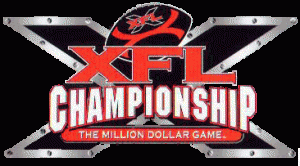
The year 2001 marked the birth (and death) of a new professional league meant to rival the NFL. It didn’t work out, to say the least. Here’s a look at the rise and spectacular, rapid demise of the XFL.
Origins
The XFL was the result of corporate synergy at the time. NBC had just lost the rights to air lucrative NFL games, while World Wrestling Entertainment was at the peak of its popularity (with stars like The Rock) and expanding at a rapid pace. WWE chairman Vince McMahon at first tried to buy the Canadian Football League and bring it more into the United States, but after that deal fell through, he worked with NBC. The network had already looked into creating a made-for-TV football league, but it was much easier to hand it off to McMahon and his sports entertainment juggernaut.
Black and Red
The XFL didn’t use those boring, brown footballs that the NFL and every college and high school team in the country used. Instead, the league played with specially-made black-and-red footballs. However, the paint used by manufacturer Spalding wasn’t exactly stable—if the ball got wet, which it often did because football is an outdoor sport and the XFL played in the rainy winter and spring months, the paint ran and made the ball slippery and very difficult to catch or throw. The league’s solution: Balls were periodically rubbed down with sandpaper to provide more grip.
Incorporated
The XFL was incorporated as XFL, LLC. Why is that interesting? Because that’s the league’s official name. “XFL” didn’t stand for anything. Sure, the “F” and “L” could stand for “football league,” but the X was really only there because it looked cool. Many thought that the X stood for “extreme” (or X-treme), but it didn’t.
The Scramble
Because it was made by a wrestling company, and specifically to attract TV viewers, the XFL tweaked a lot of standard football procedure to make the sport as lively as possible. For example, instead of a coin toss to determine possession, the XFL had “The Scramble,” where a representative from each team would each run from 10 yards out to get to the ball to see who could get it first. In the first Scramble in one of the first XFL games, a player separated his shoulder.
Attendance
Attendance for games was high, particularly for teams that played in cities where there were no NFL teams, such as the Los Angeles Xtreme, Las Vegas Outlaws, and Birmingham Thunderbolts. TV ratings, the whole point for the XFL’s existence, were a different story: 14 million tuned in for the first game, but after seeing the poor quality of play (there was a reason why the XFL’s players weren’t already signed by NFL teams), ratings eventually bottomed out. The XFL set a record for the lowest-watched broadcast in primetime history (to that point). NBC and the WWE canceled the XFL after its one and only season in 2001. Both companies lost tens of millions.
The post The XFL: The Biggest Disaster in Football History appeared first on Trivia Books and Facts | Uncle John's Bathroom Reader.


